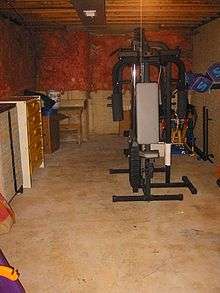Professional organizing


Professional organizing is an industry that has been developed in order to help individuals and businesses design systems and processes using organizing principles and transferring skills.
There are approximately 4,000 professional organizers who are members of the trade association, the National Association of Professional Organizers.[1]
There have been a number of television programs on the subject, starting with Life Laundry in 2002, and followed by others such as Clean Sweep, Neat, Mission: Organization, Hoarders, Clean House, and NeatTV, as well as magazines like Real Simple.
Principles
Professional organizers achieve the goal of creating and maintaining organizational systems by teaching others the basic principals of organization. Writer Julie Morgenstern suggests communicating these principals by using the acronym "SPACE", interpreted as: S=Sort, P=Purge, A=Assign a Home, C=Containerize and E=Equalize.[2] The last step ("E") consists in monitoring how the new system that has been created is working, adjusting it if needed, and maintaining it. This principal is applicable to every type of organization.
As one of their main jobs, professional organizers help clients reduce an excessive and disorganized accumulation of paper in the home or in the office.[3] Professional organizers aim to help individuals and businesses take control of their surroundings, their time, their paper, and their systems for life. Professional organizers help redirect paradigms into more useful cross-applications that ensure properly co-sustainable futures for their clients' spaces and processes.
Professional organizers offer a wide variety of services, from designing a functional closet to organizing a move. For homeowners, a professional organizer might plan and reorganize the space of a room, improve paperwork management, or coach in time-management or in goal-setting. In a business setting, professional organizers aim to increase productivity by improving paper-filing, electronic organization and employee time-management.[4]
See also
Home:
References
- ↑ "About NAPO". Retrieved 19 December 2014.
- ↑ Julie Morgenstern (1 September 2004). Organizing from the Inside Out, second edition: The Foolproof System For Organizing Your Home, Your Office and Your Life. Henry Holt and Company. p. 22. ISBN 978-1-4299-5536-2.
- ↑ Buck, Claudia (February 3, 2013). "Personal Finance: It's time to tame paper tiger". The Sacramento Bee. Archived from the original on 13 May 2013. Retrieved June 3, 2013.
- ↑ "Our Profession". Retrieved 14 April 2013.